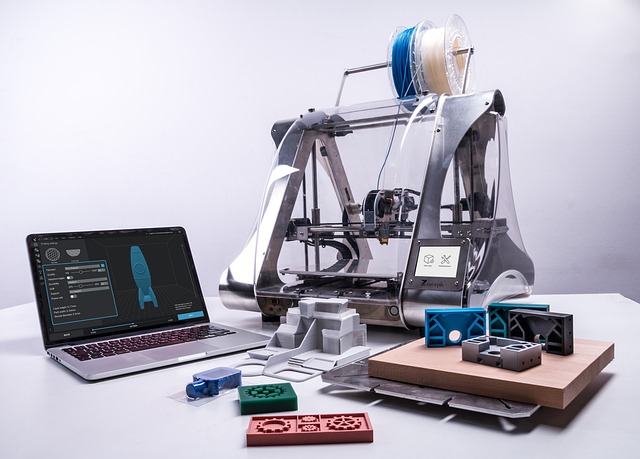3D Printing – A Revolutionary Technology
3D printing is an ever-developing revolutionary technology that has captured the attention of people worldwide. It is a process of making three-dimensional solid objects from digital designs by layering materials one over one another. 3D printing has been around since the 1980s, but it was only in recent years that it became more accessible to the general public.

What is The Process of 3D Printing?
The process of 3D printing involves the use of computer-aided design (CAD) software to create a digital model of the object to be printed. This digital model is then sliced into layers, and the 3D printer builds the object layer by layer by melting or fusing material, such as plastic or metal, and extruding it through a nozzle. The process can take several hours or even days, depending on the complexity and size of the object being printed.
What Are The Applications of 3D Printing?
3D printing has a wide range of applications in various industries, from manufacturing to healthcare. In the manufacturing industry, 3D printing is used to create prototypes and small production runs, which reduces costs and lead times. In the medical industry, 3D printing is used to create implants and prosthetics that are customized to fit the patient’s specific anatomy. 3D printing is also used in the aerospace industry to create lightweight and complex parts that are difficult to produce using traditional manufacturing methods.
What Are The Advantages of 3D Printing?
One of the biggest advantages of 3D printing is its ability to create complex geometries that are difficult or impossible to produce using traditional manufacturing methods. This is because 3D printing builds objects layer by layer, allowing for intricate designs and shapes. 3D printing is also more cost-effective than traditional manufacturing methods for small production runs, as it eliminates the need for expensive tooling and molds.
Another advantage of 3D printing is its ability to create customized products. 3D printing allows for the creation of objects that are tailored to the user’s specific needs and preferences. This is particularly useful in the medical industry, where 3D printing is used to create implants and prosthetics that fit the patient’s specific anatomy.
What Are The Challenges of 3D Printing?
While 3D printing has many advantages, it also faces several challenges. One of the biggest challenges is the limited range of materials that can be used for 3D printing. Currently, most 3D printers can only print with plastics and metals, which limits the range of applications for 3D printing.
Another challenge is the slow speed of 3D printing. While 3D printing is faster than traditional manufacturing methods for small production runs, it is still much slower than traditional manufacturing methods for large production runs. This limits the scalability of 3D printing for mass production.
The Future of 3D Printing
Despite its challenges, 3D printing has a bright future. As the technology continues to evolve, new materials will become available for 3D printing, expanding its range of applications. 3D printing will also become faster and more efficient, making it more scalable for mass production. Some of the recently developed technologies that continue to evolve are power bed fusion which is considered a subset of additive manufacturing (AM) where a heat source (like a laser, thermal print head) is used to consolidate material in a powder form to form three-dimensional (3D) objects. Metal additive manufacturing machines are part of this area as well.
One of the most exciting developments in 3D printing is the use of bioprinting to create human organs and tissues. This technology has the potential to revolutionize the medical industry by eliminating the need for organ donors and reducing the risk of organ rejection.
In conclusion, 3D printing is a technology that has the potential to transform many industries. Its ability to create complex geometries and customized products make it a valuable tool for manufacturing and healthcare. While it still faces challenges, the future of 3D printing looks promising as the technology continues to evolve and improve.
